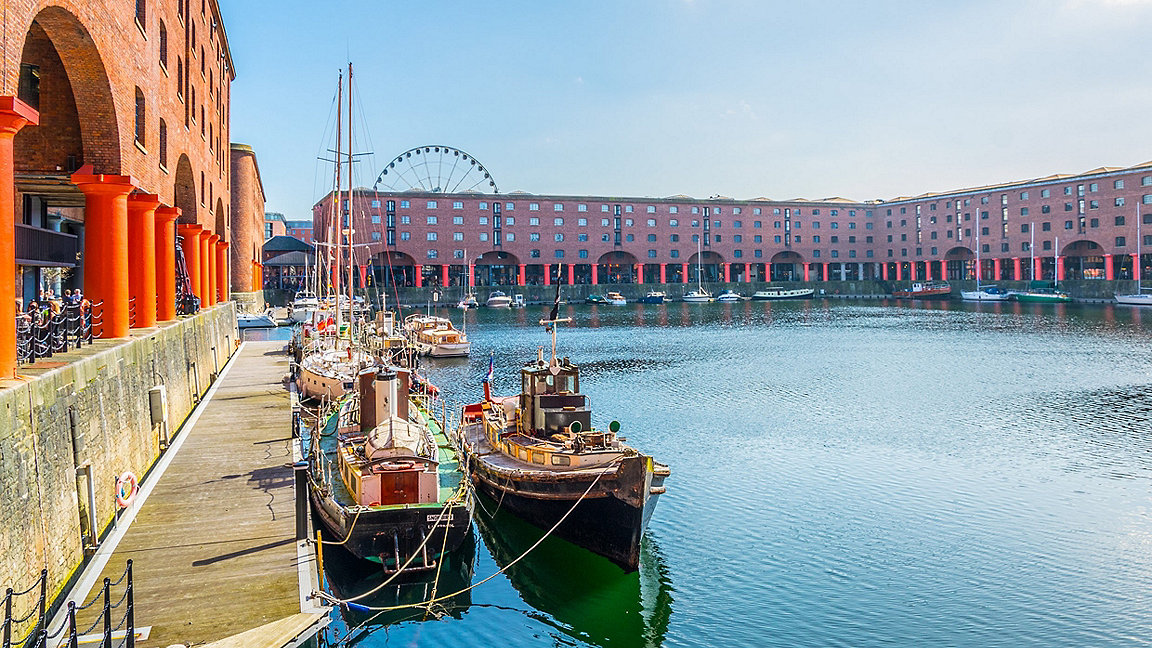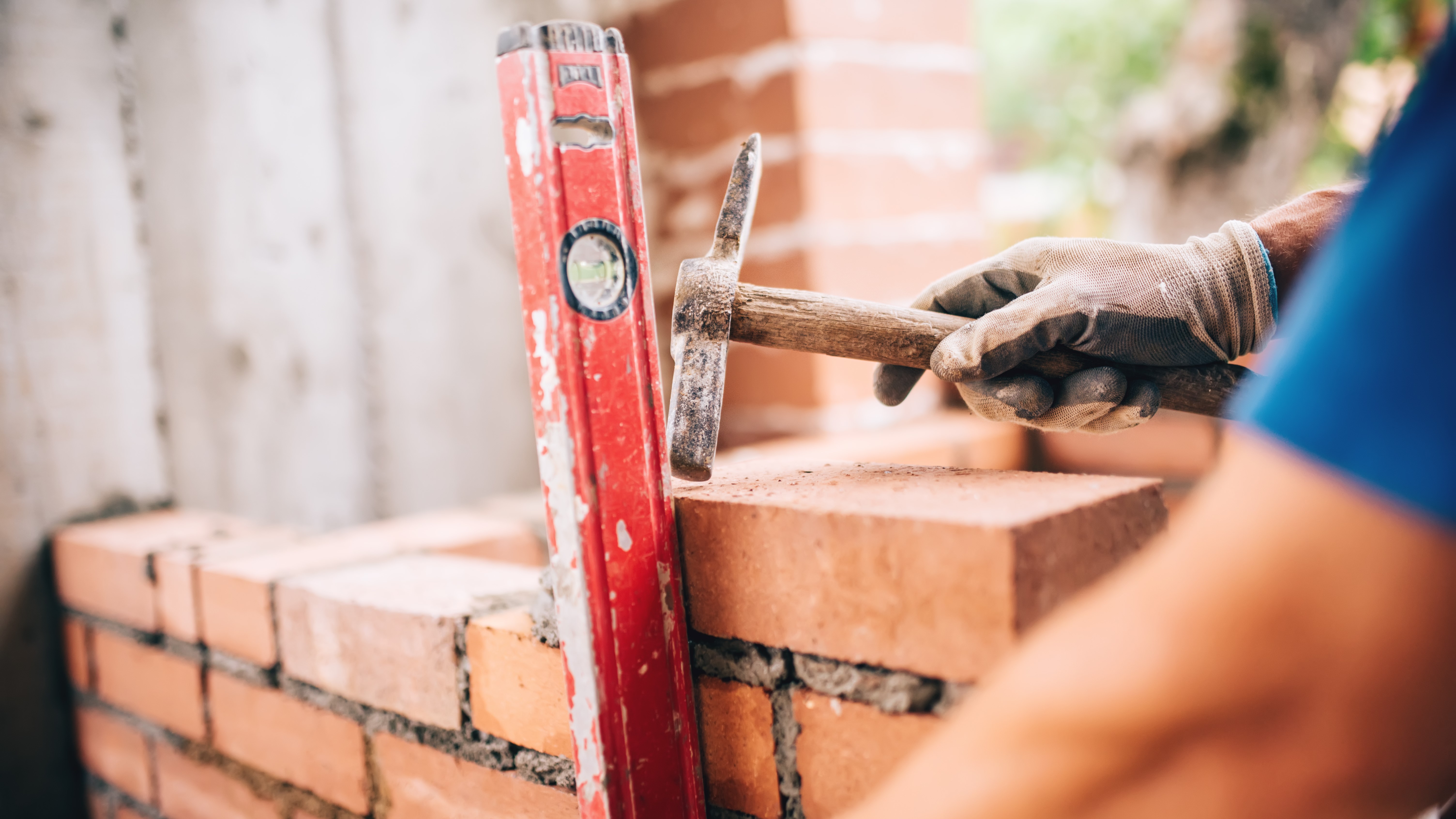
Joshua Weston has worked on many heritage sites, including Liverpool's Royal Albert Dock
Surveying is a bit of an enigma. To many outside the profession – in particular young people – what we do and the value we add is not always clear.
But the construction industry has always been a big part of my life. I often jokingly reminisce about learning to ride my bike on a building site, and say that my first toys were a hammer and saw. Although I wasn't from a wealthy background, I knew property and construction was for me as soon as I began labouring as a builder in my teens.
However, I had no insight into the range of opportunities the sector offers while I was at school. When I was eventually considering which university to apply to, the RICS-accredited degrees stood out for me because of the organisation's commitment to the public good. The variety of roles on the building surveying pathway and opportunities to influence the built environment for the better have always appealed to me.
Inspiring young people to consider surveying
Ensuring we encourage, support and educate young people as they consider their future is essential. There are presently 471,000 unemployed people aged 16–24 in the UK. I'm hugely supportive of the opportunities available to them, such as RICS surveying apprenticeships. However, I think we need to do more to inspire young people to ensure they consider this career path in the first place.
I didn't have such encouragement myself: in fact, I was told at school that I wasn't university material, and that some people are better suited to bricklaying. Although I admire the skill of tradespeople – none of us would be here without them – I knew this wasn't the path for me, and I'm eternally grateful I didn't follow that advice given to me in the sixth form.
Despite my working-class background and the way this affected the perception of my potential, I was determined not only to prove people wrong but also to try to make the world better for the next generation. Others may not find surveying until later in life – or perhaps not at all.
Regardless of your income, personal status or individual opportunities, surveying offers you an opportunity to innovate, and do things better than they were before. This is such a varied and diverse job, and given its current skills shortage the profession can offer a rewarding career to individuals from all walks of life.
Individual award represents collective effort
Winning the building surveying category in the RICS Matrics Young Surveyor of the Year Awards last year was a shock to say the least. It was an honour even to be shortlisted, and astounding to win a category filled with such an array of talent from some of the UK's leading surveying firms.
A person's achievement is only the result of the people that surround them, though, so I see my award as a testament to the incredible team I work with at Fourth Wall Building Consultancy. It's a recognition of what we've achieved together, the projects I've been fortunate enough to be involved with, and the clients we're thankful to work for.
Finding new life in heritage assets
When it comes to finding your niche, heritage has always been a fascination of mine, with an abundance of building methods and materials to understand. Growing up, I probably knew more about lime pointing than I did about English literature.
I was lucky that one of my first jobs as a builder at the age of 16 was to repoint a grade II listed vernacular stone building using traditional lime mortars. I have since been fortunate enough to undertake professional instructions as a surveyor on a number of listed buildings, including the iconic Royal Albert Dock in Liverpool, as well as numerous heritage sites across the UK, working for world-class consultancies surrounded by fantastic mentors and colleagues.
Listed buildings often provide a strikingly visual and sometimes more subtle record of our history, who we were and how we did things. They connect us to the places we visit and often the people we meet. Such old buildings are often viewed as decorative, to be looked at rather than lived in. However, I believe that sympathetic restoration is the key to saving thousands of incredible properties across the country.
As land, labour and materials for new construction become more expensive and less easily available, we're also seeing more frequent redevelopment of heritage sites. This redevelopment will be essential to the wider economy as we tackle the housing crisis, and vital in showcasing the value of surveyors.
Building philosophy is key to conservation
Understanding how and why a property was built is therefore key if building surveyors are going to bring it back into use. We should also bear in mind, though, that the old ways are often incompatible with modern use.
The staircases may be too narrow or steep to provide safe access, minimum fire ratings can't be achieved, or floor joists are undersized. Yet current practices demand that, where listed, these elements must be preserved at all costs.
This often leads to a situation where redundant elements of the structure are retained in situ alongside new working elements, creating an expensive and cumbersome Frankenstein's monster of a building that owners and operators must deal with.
A lack of understanding of old buildings often leads to a misdiagnosis of underlying issues and the use of unsuitable materials in renovation and development, such as cement mortar, chemical damp-proofing, tanking or waterproofing, and polyisocyanurate insulation. Understanding the building's fabric is essential to appreciate its development.
Perhaps instead of retaining the fabric of a building in the manner you might a museum piece – or, on the other hand, rushing to use unsuitable modern materials – we should be considering the philosophy behind the construction of these buildings.
Installing solar panels out of sight, introducing sympathetic insulation or double glazing, or reusing redundant elements elsewhere in the building could be suitable in certain situations, and surely a better compromise than doing nothing at all.
Wouldn't this be a better continuation of a building's story than the fate we have assigned to many heritage sites – left to decay until there is no history left to save? Historic England's Heritage at Risk Register listed 4,919 sites listed in 2022, a figure that doesn't include those that haven't been identified or the many listed on risk registers produced by local authorities and action groups.
In this, building surveyors are uniquely positioned to advise the owners and occupiers of heritage properties. We can help realise the financial and environmental potential of our buildings to the benefit of everyone. Our existing buildings are an integral part of our history, and improving their resilience will ensure they are part of a better future.
'A lack of understanding of old buildings often leads to a misdiagnosis of underlying issues'
Securing our future
Founding the successful consultancy Fourth Wall was a huge part, I believe, of my receiving the RICS Matrics Young Building Surveyor of the Year award. But more importantly, it's provided me with the opportunity to open up the Fourth Wall business so all colleagues can contribute, supporting training and professional development so they can follow their passions, as well as developing bespoke reporting and low-volume work to add value for clients. I've also encouraged greater diversity in the company, and I'm proud to say we have a strong, majority female team.
Whether helping young people into the profession, promoting diversity or the value of heritage buildings, we as building surveyors have a strong platform to leave the world in a better state than we found it.
Joshua Weston MRICS is the founder and lead director at Fourth Wall Building Consultancy and RICS Young Building Surveyor of the Year 2022
Contact Joshua: Email
Related competencies include: Conservation and restoration, Design and specification, Legal/regulatory compliance

